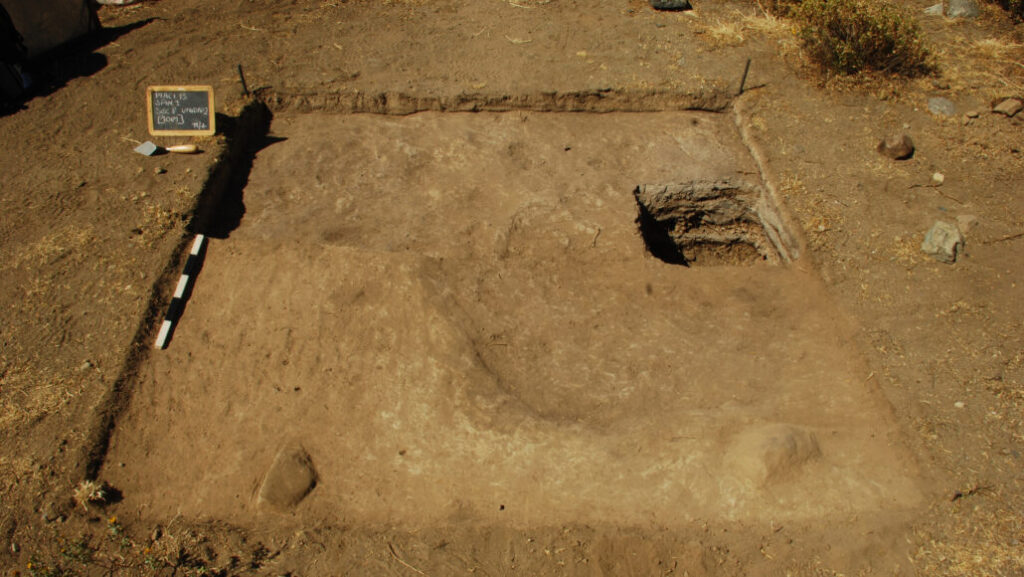The ongoing revelations of archaeology continue to grant us captivating glimpses into the lives of ancient civilizations. In a groundbreaking discovery, compelling evidence has emerged, notably indicating that individuals who inhabited the Andes Mountains approximately 700 years ago actively utilized a distinctive dance floor to generate sounds reminiscent of thunder. This intriguing revelation not only illuminates historical contexts but also unveils the profound interplay between sound, dance, and spiritual beliefs.
Unearthing the Resonant Dance Floor
Through a fortunate turn of events, researchers stumbled upon the remnants of this extraordinary dance floor at the elevated site of Viejo Sangayaico, nestled within the heart of Peru. The foundation of this specialized floor was ingeniously composed of diverse layers, incorporating soil, ash, and guano. This unique combination endowed the floor with a remarkable capability—it could absorb impacts while simultaneously emitting resonant sounds when subjected to stomping.
The Journal of Anthropological Archaeology provides a fitting platform for the culmination of this dedicated research. Spearheaded by Kevin Lane, a distinguished archaeologist affiliated with the University of Buenos Aires, this discovery’s implications are indeed profound, offering a pioneering glimpse into the intricate fusion of auditory and kinesthetic experiences within ancient societies.

Ritualistic Significance and Religious Context
A comprehensive analysis of this pre-Inca dance floor yields numerous compelling insights into its pivotal role as a sacred space. The rhythmic stamping upon this resonant surface constituted an integral facet of religious ceremonies, meticulously designed to pay homage to a deity inexorably associated with thunder. This revelation not only underscores the centrality of sound and dance within ancient societies but also accentuates the deep reverence accorded to the forces of nature.
In this context, Kevin Lane aptly affirms, “This is a rare glimpse into the role played by sound and dance in ancient societies.” The deliberate use of sound to evoke spiritual connections stands as an eloquent testament to the multifaceted nature of human expression resonating throughout history.
Echoes of the Past: Decoding the Dance Floor
The hypothesis posited by the research team suggests that the dance floor was purposefully engineered to comfortably accommodate groups comprising approximately 20 to 25 individuals. As these individuals enthusiastically participated in the rhythmic dance, the resulting sounds resonated at levels comparable to animated conversations or the vibrant ambiance of a bustling restaurant. Contemplating the amplification possibilities presented by larger groups—potentially accompanied by the harmonious fusion of singing and musical instruments—evokes intriguing speculation. In essence, the dance floor metamorphosed into a resounding auditory canvas, meticulously fostering spiritual expression.
A Glimpse into Beliefs and Practices
Interwoven intricately within the historical layers, the Viejo Sangayaico site offers an insightful window into the spiritual realm of the Chocorvos, the inhabitants of that distant era. Their reverence extended towards thunder, lightning, earthquakes, and water deities stands as a poignant testament, indicative of a profound connection bridging these natural forces and the spiritual domain. The dance floor, with its unique ability to replicate the very essence of thunder, conceivably functioned as a medium to placate or reverently celebrate the might of these deities.
In this regard, Kevin Lane underscores, “The findings suggest that sound and dance played an important role in the religious beliefs and practices of the Chocorvos.” This revelation vividly accentuates the multifaceted avenues that ancient societies traversed while navigating the intricate landscapes of their spiritual understandings.
Unraveling the Ancient Soundscape
Building upon this transformative discovery, the research team embarks on a determined expedition to unearth further instances of sound-amplifying platforms concealed within other ancient Andean sites. The potential inherent within these platforms transcends mere curiosity—it has the capacity to offer profound insights into the religious beliefs and practices of these intricate cultures. Much like the insights unfurled by Viejo Sangayaico, these platforms hold the promise of bestowing fresh perspectives upon the intricate role that sound played in ancient rituals.
Furthermore, beyond the confines of Viejo Sangayaico, other relics also beckon with glimpses into the auditory past. The Chavin de Huántar site, for instance, reveals conch-shell horns dating back approximately 3,000 years—a treasure trove of sounds ranging from pristine tones to resonant roars. Collectively, these discoveries illuminate the profound significance of sound within the tapestry of religious ceremonies in ancient Andean cultures.
A Harmonious Confluence of Eras
Amidst the symphony of history, the revelation of the resonant dance floor at Viejo Sangayaico stands as an enchanting harmonious confluence of auditory and kinesthetic experiences. As modern-day researchers meticulously sift through the fragments of yesteryears, they weave narratives that artfully bridge the chasm between ancient convictions and the contemporary pursuit of comprehension. With every disclosure, we draw inexorably closer to grasping the intricate mosaic of spiritual practices that have indelibly shaped the lives of those who preceded us.
